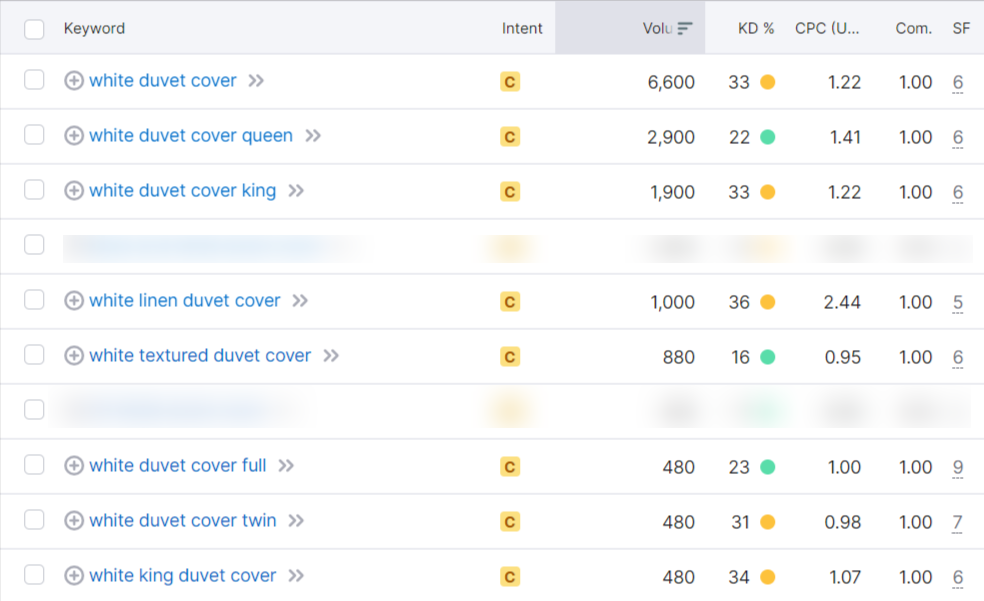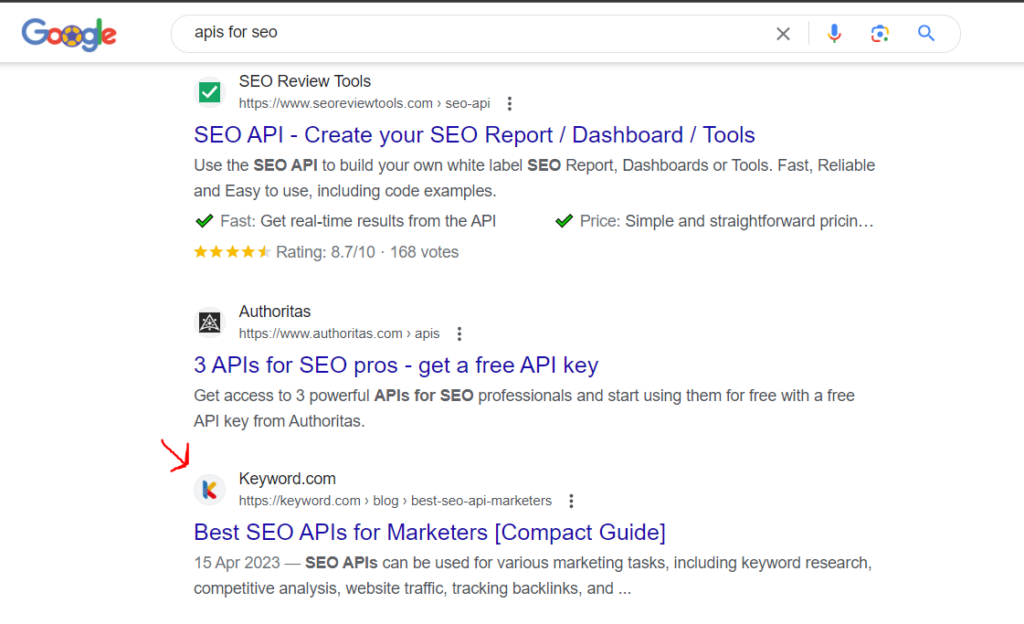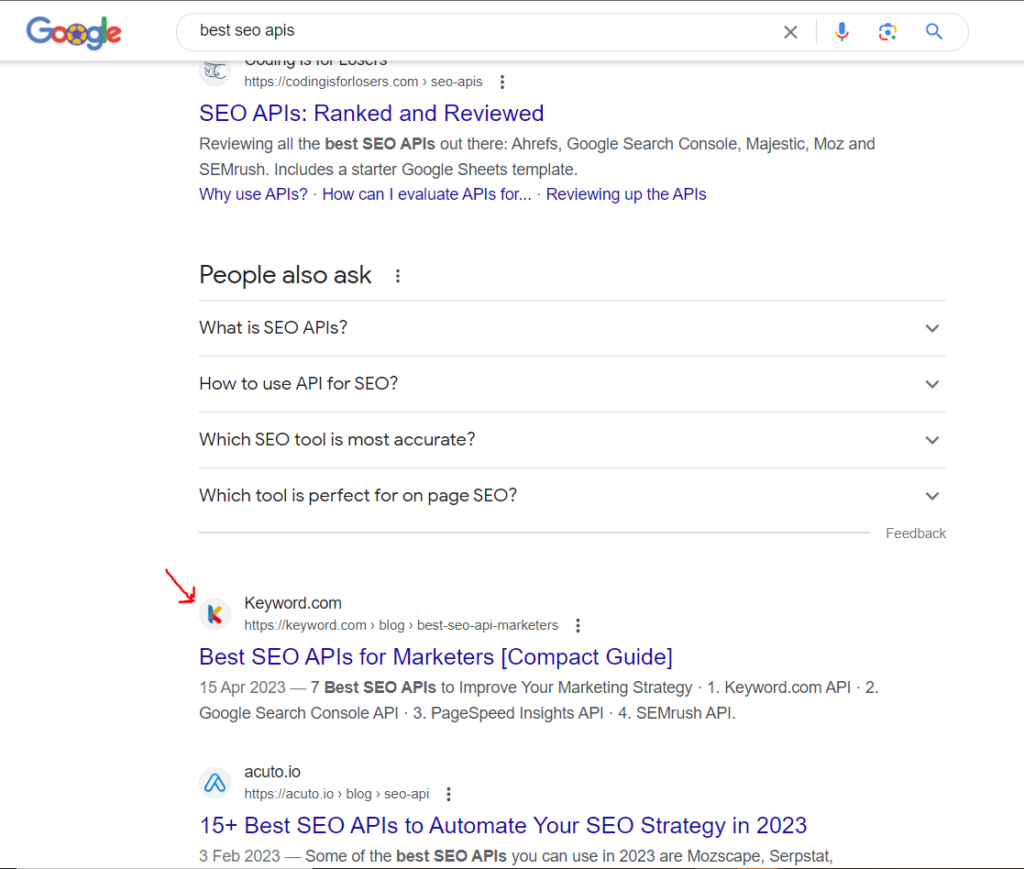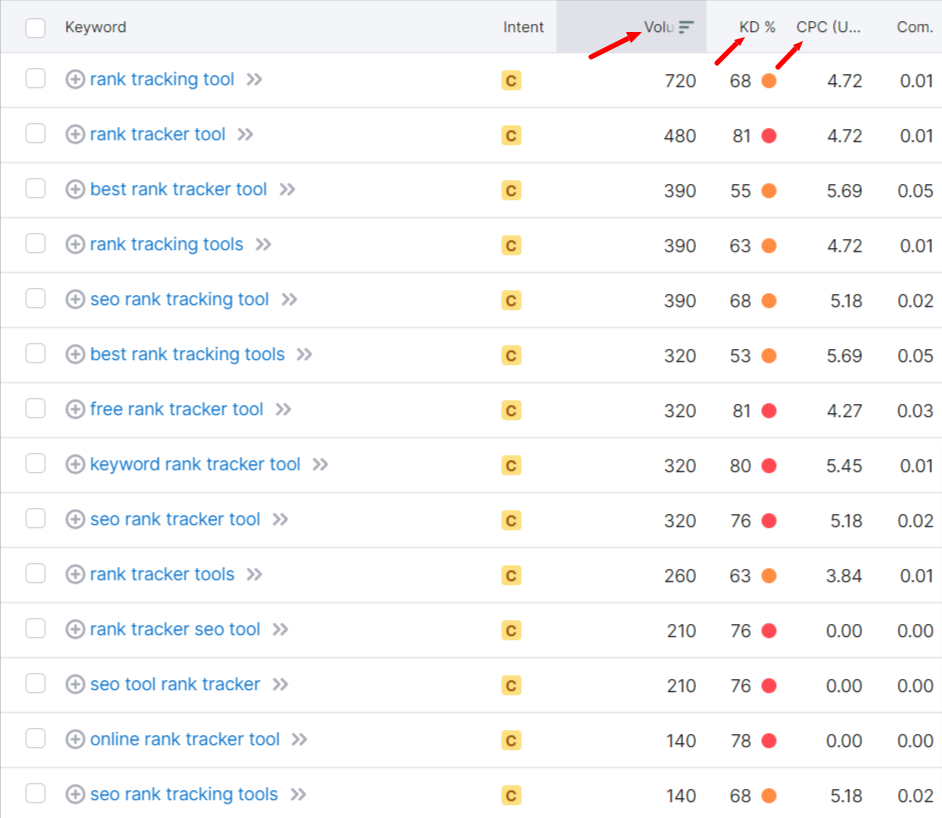As search engines become more sophisticated and user intent takes center stage, it’s no longer enough to rely solely on individual keywords to propel your website to the top of search results. Enter keyword clustering: a strategic approach that helps you prioritize context and user intent over mere keyword matches for your content.
Read on as we unravel the secrets to unlocking higher rankings through keyword clustering.
What Is Keyword Clustering?
Keyword clustering is an SEO strategy that involves grouping similar keywords or search terms based on semantic relevance and topic similarity.
It groups similar intent-based keywords to better relay user intent to search engine algorithms and increase the chances of ranking higher for a broader range of search queries.
For example, “white duvet cover,” “white duvet cover king,” “white duvet cover queen,” “white linen duvet cover,” “white texture duvet cover,” and “white cotton duvet cover” are different keywords. But they all represent searchers who want to buy a white duvet cover.

If you have an eCommerce store that sells white duvet covers, you will limit your search visibility and market share by targeting only the first keyword, “white duvet cover.” But if you create and optimize a page targeting the primary keyword and other intent-based related search queries, you will rank for multiple keywords and increase your organic traffic and visibility.
Differences Between Keyword Clustering and Topic Clustering
| Keyword Clustering | Topic Clustering |
| Main keyword – men black suit | Main topic – rank tracking |
Keyword clusters
|
Topic clusters
|
There’s a thin line between keyword clustering and topic clustering.
Keyword clustering involves grouping similar words or phrases based on semantic or contextual similarity. It organizes individual keywords into clusters to identify patterns and relationships between words.
On the other hand, topic clustering involves grouping articles related to specific topics. It organizes the entire subject matter into topic clusters. It works by having a master topic known as the pillar page and then generating supportive topics, otherwise known as the topic clusters around the pillar content.
For example, we can have a page on customer relationship management as our pillar content while we have topic clusters like CRM marketing, CRM software, CRM meaning, and more.
Topic clustering is best for building topical authority, although through proper internal linking. Provide appropriate internal links across the topic clusters, primarily to the pillar page. Through this process, you take your readers through a web of interconnected valuable information, which increases your page’s dwell time and is a good sign to Google’s algorithm that your site is worth rewarding.
How Keyword Clustering Improves Organic Ranking
Keyword clusters can help you:
1. Rank for Multiple Keywords
Ranking for multiple keywords is like hitting several targets with one shot. For instance, if you target “rank tracking tool” as your primary keyword, you will have keyword clusters like “rank tracker tool,” “rank tracking tools,” “seo rank tracking tool,” “free rank tracker tool,” and more.
Optimizing your content for these keywords increases your chances of ranking in the SERPs and driving organic traffic to your site for different search queries.
For example, we created a compact guide on the Best SEO APIs for marketers. We optimized several keyword clusters like “SEO APIs,” “best SEO APIs,” “API for SEO,” and “SEO API” and ranked on the first page for all these search queries with traffic from individual keywords.
2. Improve Your Short-Tail Rankings With Long-Tail Keywords
Short-tail keywords are like crowded highways during rush hour. They are typically one or two-word phrases that are broad and highly competitive. Trying to rank for these keywords can be akin to merging onto a congested freeway during peak traffic hours — it’s challenging, and the competition is fierce.
For instance, if you have a website selling fitness equipment, targeting a short-tail keyword like “fitness” would pit you against giants in the industry, making it exceedingly difficult to secure a spot on the coveted first page of search engine results. The high competition, coupled with the ever-changing algorithms of search engines, makes it a daunting task for most websites.
Let’s shift gears and consider the scenic route: long-tail keywords. These are more specific and detailed keyword phrases, often containing three or more words. Long-tail keywords are like the less-traveled roads, where you encounter less traffic but a more targeted audience.
Continuing with our fitness equipment example, instead of trying to rank for “fitness,” you could target a long-tail keyword like “durable home gym equipment for small spaces.” While the search volume for this specific phrase may be lower, it brings several advantages:
- Less Competition: Long-tail keywords typically have lower competition, making your website’s ranking easier
- Higher Relevance: Long-tail keywords align better with user intent. When someone searches for such a specific phrase, they are more likely to find exactly what they’re looking for on your site.
- Better Conversion Rates: Visitors from long-tail keyword searches often have a more defined purpose, leading to higher conversion rates.
- Improved Ranking: By focusing on various long-tail keywords related to your niche, you can build a strong foundation to boost your overall website ranking over time.
Learn more: How to Use Long-Tail Keywords to Improve Short-Tail Rankings
3. Helps You Create High-quality Content
Grouping related keywords and phrases improves the relevance and comprehensiveness of your content, improving content quality. This relevance caters to search engines’ algorithms, prioritizing relevant results, and ensures your content addresses various aspects of a specific topic, providing added value to your readers.
For instance, an eCommerce store that sells men’s suits can create high-quality content on black suits for men and touch different areas of the search intent by optimizing keyword clusters like “black on black suits for me,” “dark suits for men,” “cheap black suit men,” “black men suits online,“ ”all black men suits,” and more.
4. Boosts User Experience
Google prioritizes its users above content creators. This fact is arguable, but most of their updates make it true.
In August 2022, they released their content helpful update that showcased their focus on providing the best experience for their users.
“The helpful content update aims to reward better content where visitors feel they’ve had a satisfying experience, while content that doesn’t meet a visitor’s expectations won’t perform as well.”
Quality content isn’t just about keywords; it’s about meeting the needs of your audience. Keyword clustering helps you understand the various facets of a topic your audience is interested in. This enables you to craft content that answers their questions, addresses their concerns, and provides a better overall user experience.
It also:
- Reduces Keyword Stuffing: Keyword stuffing, the practice of overloading content with keywords, is detrimental to quality. With keyword clustering, you’re naturally incorporating related keywords into your content without resorting to stuffing. This ensures that your content reads naturally and is more user-friendly.
- Improves Content Structure: Clustering keywords often involves organizing your content into logical sections or subtopics. This results in a well-structured piece that is easier for readers to navigate. Structured content contributes to a better user experience and keeps readers engaged.
How to Create Keyword Clusters
As enticing as the benefits of keyword clustering can appear, it can be daunting if you don’t know the “Technical Know-How” to it.
Follow these steps to create keyword clusters in the right way to drive higher rankings:
1. Start With Keyword Research
Get the primary keyword of the topic you want to write on. This can be based on a unique product feature, trending industry topic, etc.
For example, if you want to write an article on the best rank-tracking software in 2023, your primary keyword can be “rank-tracking software” or “best rank-tracking software.”
The next step is to generate a list of long-tail keywords, subtopics, questions, variations, or synonyms to your primary keyword. You can use Google Keyword Planner or keyword suggestions to find keywords with high search volume, low competition, and relevance to your niche.
You can also check your competitors’ pages to review which keywords they are optimizing to increase your keyword list.
Once you have a list of keywords to target, you can use a keyword suggestion tool like keyword.com to find more search queries. Keyword.com automatically generates a list of relevant keywords related to your search query.
Learn more: How to set up keyword tracking.
2. Analyze Your Keywords
Once your keyword list is ready, the next step is to extract search queries relevant to the search intent that can generate traffic to your site.
Consider these four crucial factors when segmenting your keyword list: Search intent, keyword difficulty, CPC, and marketing funnel.
Search Intent
Search intent guides the kind of content you create for a keyword. If a keyword is informational, you know to create “how-to” content that provides general knowledge about the topic.
Keyword Difficulty
Keywords with too high KD are challenging to rank for. These keywords already have authoritative websites optimizing them, and you may need an SEO strategy that will break the bank to rank for them (especially if you have a new site).
Go for keywords with medium or low keyword difficulty. And the keyword type that falls into this category is primarily long-tail keywords.
Combine more long-tail keywords and a few short-tail keywords in your keyword list. More so, you can use long-tail keywords to improve your short-tail ranking.
Further reading: Keyword Difficulty: Why It Matters for Ranking on SERPs.
Cost-Per-Click (CPC)
CPC describes the amount an advertiser pays for each click on their advertisement.
Most short-tail keywords have good cost-per-click. However, your choice of long-tail keywords might have low search volume, but ensure you choose the ones with reasonable cost-per-click metrics.
Marketing Funnel
Your marketing funnel stage also affects your keyword cluster. For instance, TOFU (top of the funnel) and MOFU (middle of the funnel) content can have awareness and lead-nurturing keyword clusters. In contrast, bottom-of-the-funnel content can have conversion keyword clusters.
3. Optimize the Keyword Clusters in Your Blog Content
Use the keyword clusters generated in appropriate sections of your page, including headings, meta tags, body of content, and more. Answer users’ questions, provide valuable insights, and offer comprehensive information about each subtopic.
Read our keyword cannibalization article to see how we pulled this off.
Common Mistakes Made When Creating Keyword Clusters
When grouping keywords for search engine optimization, take note of the following common mistakes that can frustrate your efforts:
1. Shallow Research
Ensure that you understand your audience first before researching keywords. Answer questions like:
- What am I selling?
- What problems does my target audience need to solve?
- What would make potential customers choose my website over other similar ones?
- What demographic of customers am I targeting?
- If I were a new customer, what terms would I enter and search on Google to find my products or services?
2. Ignoring Search Intent
When grouping keywords, failing to consider the user’s search intent will lead to irrelevant or mismatched content. Google’s algorithm won’t understand the purpose of the content, which ultimately affects your ranking.
Further reading: Search Intent: What is it, and how do people search?
3. Not Checking Your Competitors’ Pages
It’s smart to analyze what others have done before doing yours. Thoroughly examine your competitors’ success and mistakes by analyzing their keyword clusters and how well they optimize them on their pages.
4. Ignoring Long-Tail Keywords
Focusing solely on high-volume keywords may lead to fierce competition, which makes it harder to rank for these search queries. It’s crucial to balance high-volume keywords with low-competition and long-tail keywords.
Your keyword clusters should feature more long-tail keywords. Besides, some SEO experts believe keyword clustering is about grouping long-tail keyword variants.
5. Neglecting Local or Regional Keywords
If your business serves specific regions or locations, include location-based keywords in your clusters to rank for local search engine results. Say you’re a restaurant in Berlin; target keywords like “the best restaurant in Berlin” and “top eateries in Germany.”
6. Poorly Structured Clusters
Grouping unrelated or loosely related keywords in a cluster can negatively impact the user experience and hinder your SEO efforts. Each cluster should have a clear, cohesive theme.
Overusing keywords in your content to the point of unnatural and repetitive language can harm SEO rankings and turn off users.
Track Your Keywords to Monitor Rankings
Tracking keyword rankings ensures your website is visible, taking up valuable search engine real estate and driving incremental traffic, sales, conversions, and revenue. It helps you analyze your SEO strategies and beat keyword ranking fluctuations.
However, you will need more than the manual SERP analysis to track your keyword rankings perfectly: enter keyword.com.
Keyword.com is a keyword rank tracker software that monitors your keyword rankings on search engine result pages with strategies to outsmart your SERP competitors.
Its free SERP checker also simulates Google search from a different device or location as if you were there. All you need to do is enter your main keyword, select the region and location, and click “organic search results” to view organic ranking or “local listing search results” for local result page analysis.
Try the Starter Pack 14-day free trial to track up to 100 keywords daily.
Frequently Asked Questions on Keyword Clustering
We answered some common questions you have.
1. What is the Difference Between Keyword Clustering and Keyword Stuffing?
Keyword clustering is a white hat SEO technique that groups similar individual keywords or phrases based on their semantic or contextual similarity. It helps the algorithm understand the topic intent better and gives users the best experience.
Keyword stuffing, on the other hand, is a frowned-upon practice in SEO that involves overusing or excessively repeating keywords within a piece of content in an attempt to manipulate search engine rankings. The primary purpose is to artificially inflate keyword density in the content, hoping to rank higher in search engine results for those specific keywords.
Note: Keyword stuffing is now considered a spam factor and can lead to manual action penalties from Google.
2. How Do Search Engines See Keyword Clusters?
Search engines view keyword clusters as groups of related keywords or phrases that are semantically connected and often appear together in context. Keyword clusters help search engines understand the main themes and topics covered in a piece of content or a website, which can improve the content’s relevancy and ranking in search results.
3. What Are Some Challenges in Keyword Clustering?
Common challenges with clustering keywords include:
- Polysemy (multiple meanings of words) and synonymy (various words with similar meanings).
- Handling out-of-vocabulary (OOV) words or unseen keywords.
- Determining the optimal number of clusters.
- Dealing with misspelled keywords.
4. How Do You Evaluate the Quality of Keyword Clustering Results?
Search intent should be your Key Performance Indicator (KPI). Any keyword clusters irrelevant to your search intent should be in the trash.



